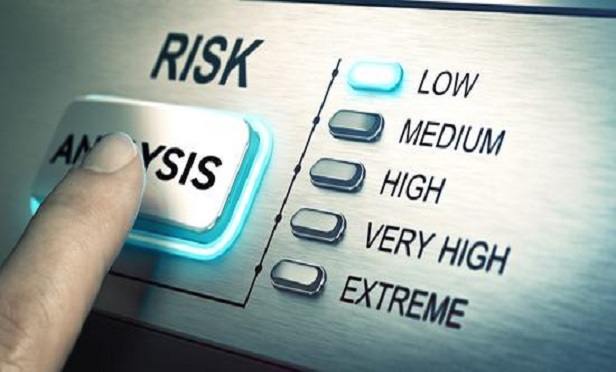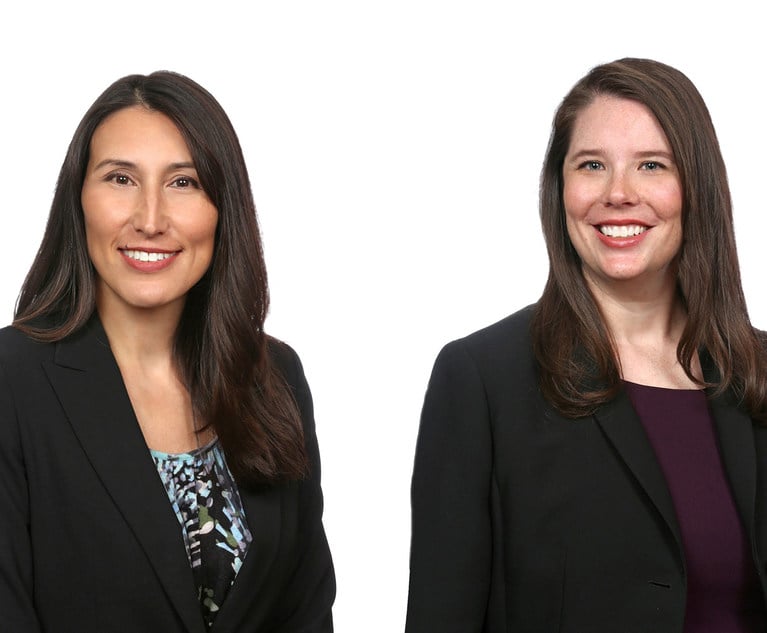Editor’s Note: Part 1 of this two-part series addressed employers’ obligations to ensure workplace safety for customers and employees.
As the coronavirus spreads across the globe, companies are identifying how to respond to their customers while protecting employees from the risks associated with the disease. This includes complying with state and federal guidelines relevant to maintaining a safe workplace and properly screening new hires for symptoms of COVID-19.
Elements of an infectious disease and response plan
Every employer should develop an infectious disease preparedness and response plan to confront the pandemic. Considerations include where and how workers might be exposed — including from the general public, customers and coworkers — as well as workers’ individual risk factors such as advanced age, underlying medical conditions and pregnancy.
The plan should address contingencies for increased rates of absenteeism, the need for social distancing and other administrative controls, options for conducting essential operations with a reduced workforce (such as cross-training workers across different jobs) and handling interrupted supply chains or delayed deliveries. The employer also should consider developing policies and procedures for prompt identification and isolation of sick people.
Classifying worker exposure to COVID-19
Worker risk of occupational exposure to coronavirus may vary from “very high” to “low” risk, depending on industry type and the need for close contact with infected individuals. OSHA advises that most American workers will likely fall in the lower or medium exposure risk levels.
Jobs with “very high” exposure risk include health care workers who perform aerosol-generating procedures on COVID-19 patients, health care or laboratory personnel who handle specimens from COVID-19 patients and morgue workers who perform autopsies on COVID-19 patients. “High” exposure risk jobs include health care staff who are exposed to and transport COVID-19 patients.
“Medium” exposure risk jobs include those that require frequent or close contact with people who may be infected with coronavirus, including contact with the general public. This category includes workers in grocery stores, hardware stores and other businesses that are deemed essential services open to the general public during the pandemic. “Lower” exposure risk jobs are those that do not require frequent or close contact with the general public or with coworkers.
In its “Guidance on Preparing Workplaces for COVID-19,” OSHA provides recommendations for implementing workplace control measures and the use of PPE depending on the job risk classification.
Risk communication
A primary means by which employers may improve worker safety during a pandemic is through clear and consistent communication. According to OSHA, clear communication promotes confidence in the employer’s ability to protect workers and reduces absenteeism. Workers who believe that their employer provides a safe and healthy workplace are more likely to report for work during a pandemic.
Good workplace communication includes ensuring that workers understand which job activities may put them at risk for exposure, social distancing strategies, what options may be available for working remotely, good hygiene and appropriate disinfection procedures, what PPE is available and how to use it properly, what medical services may be available and where to direct questions. Workers with job-related exposure to infections who voluntarily disclose personal health risks should be considered for job accommodations or additional protective measures such as the use of PPE.
Implementing workplace control measures
Employers may modify the work environment or change work practices. Engineering controls involve isolating employees from work-related hazards. This may include installing high-efficiency air filters, increasing ventilation rates, installing physical barriers such as plastic sneeze guards, installing a drive-through window for customer service or use of specialized negative-pressure ventilation in some settings.
Administrative controls require action by the worker or employer and typically involve changes in work policy or procedures to reduce or minimize exposure. This includes identifying a workplace coordinator and minimizing contact among workers through such options as remote work, altering shifts and cross-training employees across different jobs and tasks.
Personal Protective Equipment
Although engineering and administrative controls are considered more effective in minimizing exposure to COVID-19, PPE also may be needed in some workplace settings. PPE should not take the place of other prevention strategies. PPE may include gloves, goggles, face shields, facemasks and respiratory protection. All types of PPE must be selected based on the hazard to the worker, properly fitted, properly worn, regularly inspected, and properly removed, cleaned, disposed of or stored. The employer should follow OSHA’s personal protective equipment standards, 29 CFR 1910 Subpart 1.
Surgical masks versus respirators
As the COVID-19 pandemic unfolds, there has been much confusion over what constitutes proper respiratory protection in various settings. Here is a look at the differences between respirator and non-respirator facemasks.
Surgical and other non-respirator facemasks are often used by workers to protect against splashes and sprays containing infectious agents. On sick individuals, they may prevent the spread of respiratory infections by large droplets. Anyone can use them regardless of training and they should be properly disposed of after use.
Non-respirator facemasks do not protect persons from airborne infectious disease and cannot be relied on for novel pathogens. They do not prevent the inhalation of virus particles because they do not seal to the person’s face and are not tested to the filtration efficiencies of respirators.
Respirators include various types of filtering facepieces and are used by workers to prevent inhalation of small particles, including airborne transmissible infectious agents. To be effective, the proper filter material should be used (N95 or better) and must fit tightly to prevent air leaks. Respirators may require training, fit testing and proper cleaning. Employers that provide respirators to their employees must establish a respiratory protection program that is compliant with OSHA’s respiratory protection standards, 29 CFR 1910.134.
Possible liability lawsuits arising from COVID-19 exposure
Businesses may face liability claims from members of the general public claiming to have been exposed to COVID-19 while on their premises or due to interactions with employees or volunteer staff. Claims may include allegations of exposure resulting in bodily injury and property damage as well as failure to implement an appropriate plan in response to the global health crisis and associated risks. Since COVID-19 is highly contagious, visitors and their family members may file general liability claims.
As organizations and their insurers will be the target of such claims, organizations are advised to consult with and follow the recommendations of their carriers and collaboratively examine the organization’s practices regarding premises access and direct contact between employees, volunteers and members of the general public. While anyone may allege exposure to COVID-19 due to the actions or omissions of an organization, the key to defending against such allegations is demonstrating the organization took reasonable precautionary measures.
Organizations may also encounter situations where the general public voluntarily exposes themselves to risk, including ignoring social distancing recommendations and advice to stay indoors. While one may expect that the doctrine of assumption of risk will bar recovery of such individuals against an organization, this is not always the case. Many states, including New York, have abolished the doctrine of assumption of risk (with limited exceptions) and instead look at the parties’ comparative fault when it comes to establishing a defendant’s liability and exposure.
Practically speaking, this means that an organization may be sued by an individual who may have acted unreasonably and exposed themselves to risk by their own actions. For example, sports organizations may be sued for failure to prevent the public’s access and group gatherings at their facilities, which results in COVID-19 exposure, even when the organization did not invite such a gathering or access. It is advisable, therefore, that organizations closely follow state and federal guidance and place appropriate limitations on gatherings at their facilities and other social contact.
Dr. Anthony Fauci, director of the National Institute of Allergy and Infectious Diseases (NIAID), recently warned the United States about the possibility a “COVID-19 second wave” might occur later this year after the current phase of the pandemic recedes. Organizations must, therefore, remain vigilant even when the shelter-at-home and similar orders are lifted. It is a best practice to monitor and follow the guidelines established by the Centers for Disease Control and Prevention even after the first wave of COVID-19 pandemic subsides.
The price of complacency
Many workplaces with traditionally few recordable or reportable work-related illnesses must now educate themselves on their obligations under federal and state health and safety laws or face expensive fines from regulators and greater exposure to workers’ compensation claims and liability lawsuits.
By preparing an infectious disease preparedness and response plan, the employer will engage in the necessary exercise of creating clear lines of communication, identifying where and how workers might be exposed and implementing workplace controls. Performed properly, this exercise should result in better workplace morale, lower absenteeism, less business disruption and liability defenses if needed.
Ian Stewart is a partner with Wilson Elser Moskowitz Edelman & Dicker LLP’s Los Angeles office, with a focus on complex general casualty, cannabis law, product liability, transportation, data privacy and intellectual property litigation. He can be reached at [email protected]. Jana S. Farmer is a partner with Wilson Elser Moskowitz Edelman & Dicker LLP’s White Plains office and represents client interests in intellectual property matters, protection of creative assets and general commercial disputes. She can be reached at [email protected]
Related:
Managing Employer Risk in the Age of the Coronavirus, Part 1
NOT FOR REPRINT
© 2024 ALM Global, LLC, All Rights Reserved. Request academic re-use from www.copyright.com. All other uses, submit a request to [email protected]. For more information visit Asset & Logo Licensing.


 A strong disease response plan considers worker exposures, risk communications, workplace control measures and the use of personal protective equipment. (Photo: Shutterstock)
A strong disease response plan considers worker exposures, risk communications, workplace control measures and the use of personal protective equipment. (Photo: Shutterstock)




